The pads also need to be replaced when the brake disc is replaced, the pads become oily or have deep grooves, cracks and chips, as well as if the pads peel off from the base of the pads.
The inner pads are equipped with acoustic wear indicators that begin to squeal during braking when the pad wear approaches the limit. If you hear a screeching sound while braking, it's time to change the pads.
The brake pads of the front wheels must be replaced only as a set - all four brake pads.
Replacing only one brake pad can cause the vehicle to pull unpredictably to the side when braking.
If the fluid level in the brake fluid reservoir is at the MAX mark, then before installing new pads, we pump out part of the fluid from the reservoir with a syringe or a rubber bulb so that when the piston is sunk into the working cylinder of the brake mechanism, the fluid does not flow out from under the reservoir cover.
We remove the front wheel.
By inserting a mounting spatula or a wide-blade screwdriver between the pad guide and caliper and leaning it against the guide..
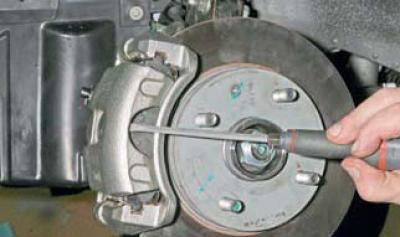
... we move the caliper, sinking the piston into the cylinder.
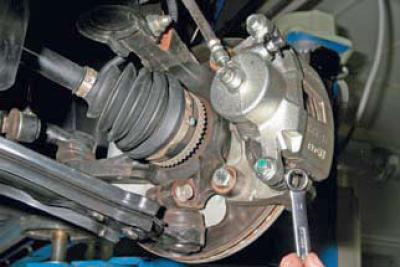
Using a 14mm wrench, unscrew the lower bolt securing the caliper to the guide pin.
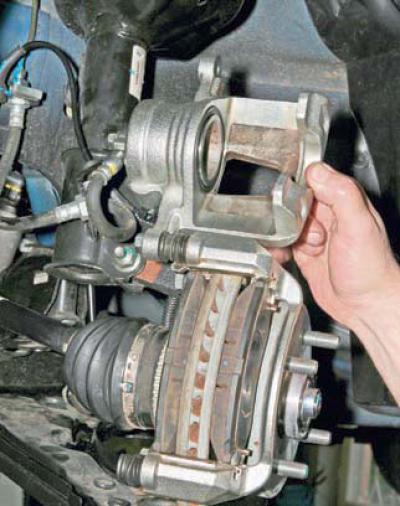
Raise the caliper by turning it around the axis of the upper guide pin.
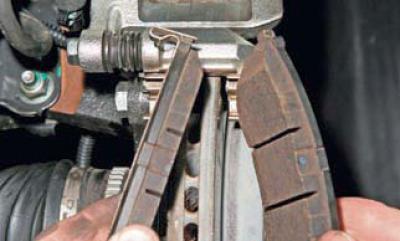
We take out the brake pads from their guide.
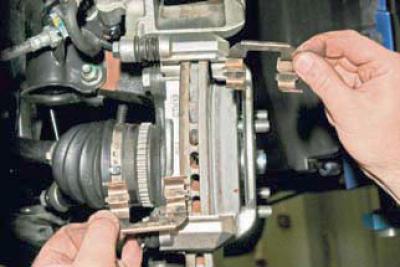
Remove the two spring clips of the pads.
With a metal brush, we clean the seats of the pads in their guide from dirt and corrosion.
Before installing new pads, check the condition of the protective covers of the guide pins.
We replace a torn or loose cover.
For this…
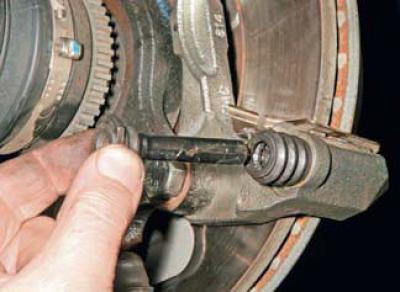
... remove the finger from the hole of the guide pads..
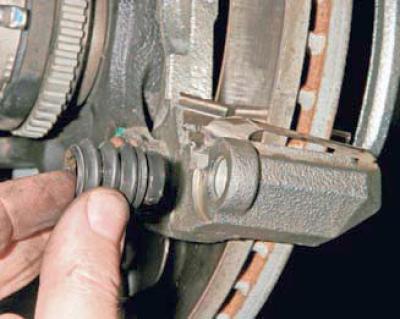
...and a cover.
Before installing the pin, we put a little grease into the hole of the guide pads and apply a thin layer of grease to the surface of the pin.
Before installing new brake pads, it is necessary to move the piston as far as possible into the cylinder.
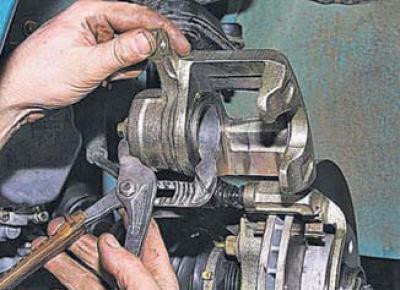
To do this, with sliding pliers, we sink the piston into the cylinder.
We install new brake pads in the guide pads and lower the caliper.
Similarly, we replace the pads on the other side of the car.
After replacing the pads, press the brake pedal several times to set the gaps between the pads and discs. We check the fluid level in the tank and, if necessary, bring it to normal.
During operation, the surface of the brake disc becomes uneven, as a result of which the contact area of new, not yet run-in pads with the disc decreases. Therefore, during the first 100 km of run after replacing the pads, while the new pads have not run in, be careful, as the braking distance of the car may increase.
